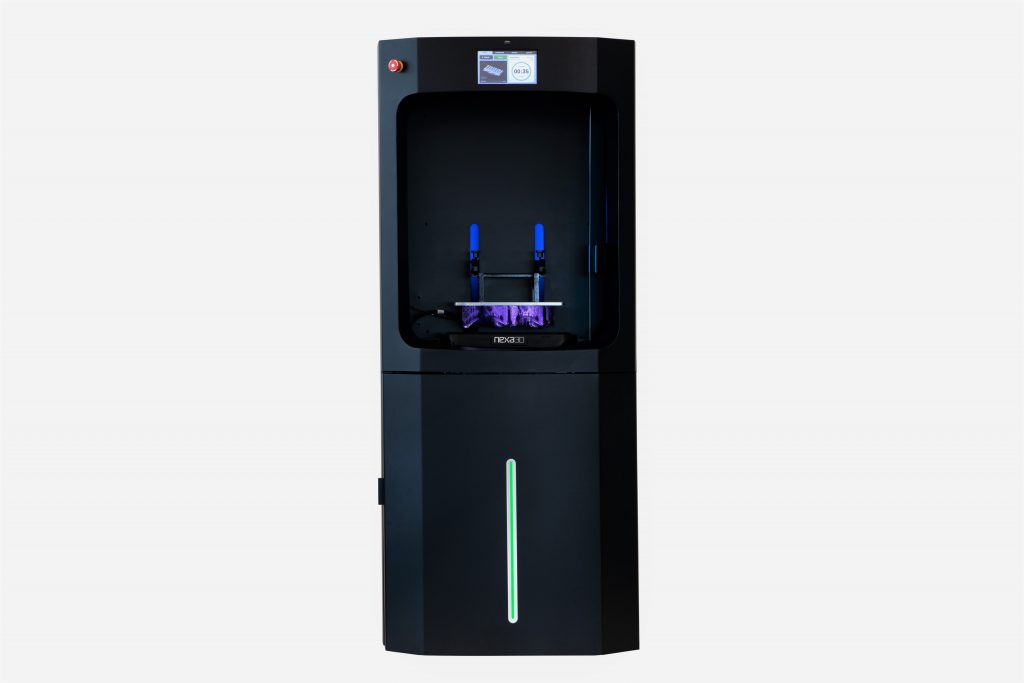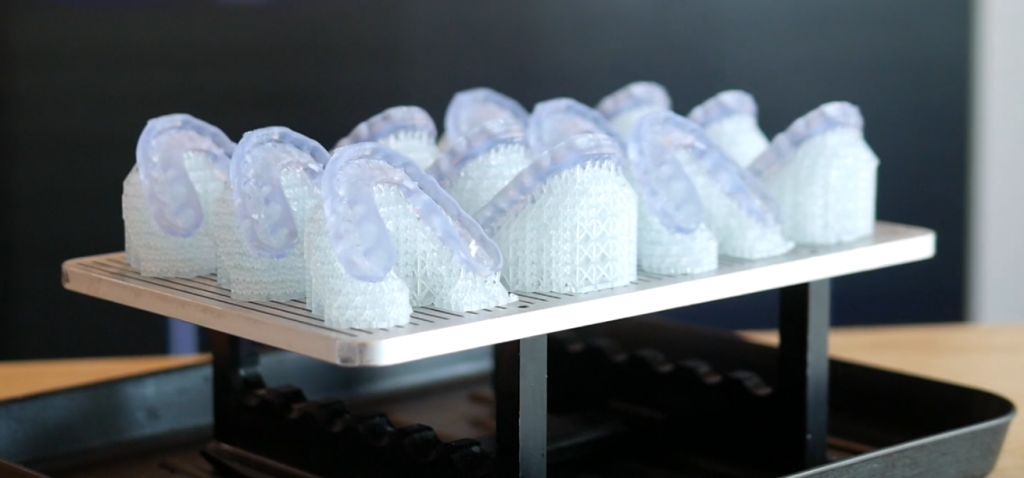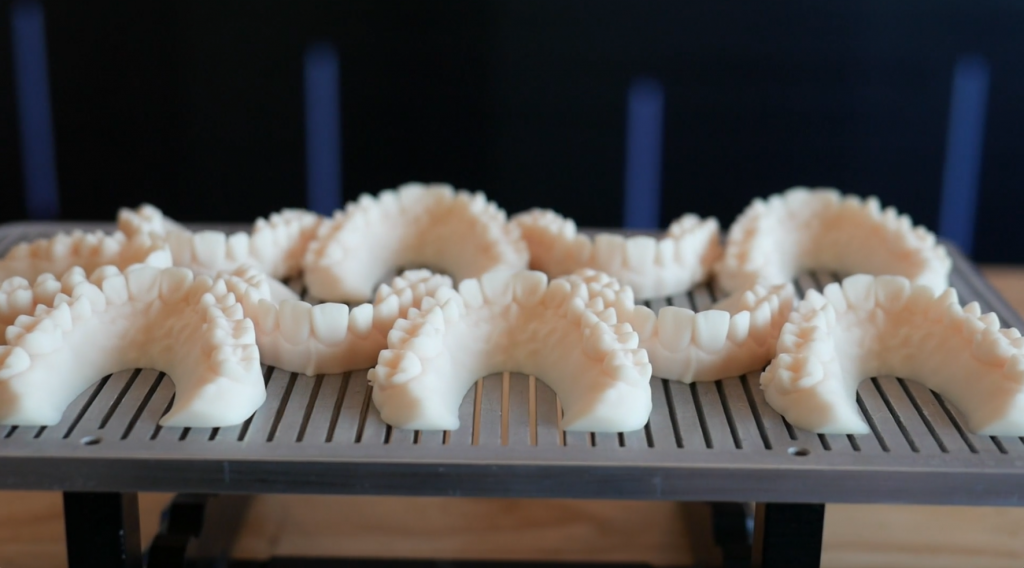3D printer manufacturer Nexa3D has launched its latest resin-based 3D printer.
Designed specifically for dental applications, the NXD200 is characterized by its large-format build volume measuring 275 x 155 x 200mm. Operating on Nexa’s proprietary Lubricant Sublayer Photo-curing (LSPc) 3D printing technology, the industrial system is aimed primarily at dental labs looking for high-throughput polymer production capabilities.
Prior to the launch, the company also partnered with dental materials developer KeyStone Industries, so the NXD200 is being offered with a full suite of specialist 3D printing resins. This includes the 510K-cleared & Class IIa-certified KeySplint Soft and KeyModel Ultra for dental and orthodontic models, as well as the KeyGuide and KeyTray materials for surgical guides and custom impression trays respectively.
Kevin McAlea, COO at Nexa3D, states, “Our NXD200 dental 3D printer opens new possibilities for dental labs in terms of speed and build size, unleashing whole new levels of productivity and providing a wide range of options to create dental restorations. The system presents a significant upgrade for experienced dental lab practitioners with its ultra-fast printing speed, up to 20X productivity gains, and expanded range of KeyPrint 3D printing dental resins that come at the lowest cost of ownership available on the market today.”

LSPc 3D printing with Nexa3D
LSPc is Nexa3D’s take on high-speed stereolithography 3D printing. As well as the newly released NXD200, the technology features in the company’s flagship NXE400, a versatile 16L industrial 3D printer built for a whole host of applications.
With its 275 x 155 x 400mm build volume, the NXE400 has recently been used to produce custom polymer parts for motorsport applications, as well as for more general manufacturing tooling purposes. According to Nexa3D, the system features more than double the average build volume of currently available counterparts, allowing for both large part and high-volume polymer fabrication.

The NXD200 3D printer
Much like the NXE400, Nexa3D describes the new NXD200 as an ultrafast printing engine, which reportedly offers a 20X productivity advantage over its competitors. Backed by the tried-and-tested LSPc process, the new system combines a large build volume with a 4K resolution LCD screen to deliver clinic-ready dental parts at a pixel pitch of just 76.5 microns.
The company has also designed the NXD200 to be completely modular, granting users the ability to easily interchange parts and integrate hardware upgrades in a bid to eliminate obsolescence. With this element of user self-reliance, customers will be able to service every aspect of the printer in a matter of minutes using prescriptive analytics and replaceable hardware modules. On the software side, the system is fully compatible with the company’s NexaX ‘file-to-part’ software for streamlined part preparation and remote print management.
McAlea adds, “The NXD200 printer comes equipped with the latest portfolio of dental materials that are tailored for ultra-fast printing of dental restorations. We also worked diligently to develop cognitive software and integrated sensors technology, which together optimize manufacturing part performance, provide detailed predictive diagnostics and offer continuous monitoring and process improvement.”

Technical specifications and pricing
Below are the technical specifications for the NXD200. The 3D printer is available to order now. Readers interested in purchasing the system should visit the Nexa3D store page for a quote.
| Build volume | 275 x 155 x 200mm |
| LCD resolution | 4K |
| Pixel pitch | 76.5 microns |
| Wavelength | 405nm |
| Dimensions | 710 x 710 x 1675mm |
| Weight | 160kg |
| Connectivity | Ethernet, Wi-Fi |
Subscribe to the 3D Printing Industry newsletter for the latest news in additive manufacturing. You can also stay connected by following us on Twitter and liking us on Facebook.
Looking for a career in additive manufacturing? Visit 3D Printing Jobs for a selection of roles in the industry.
Featured image shows the NXD200 3D printer. Photo via Nexa3D.



